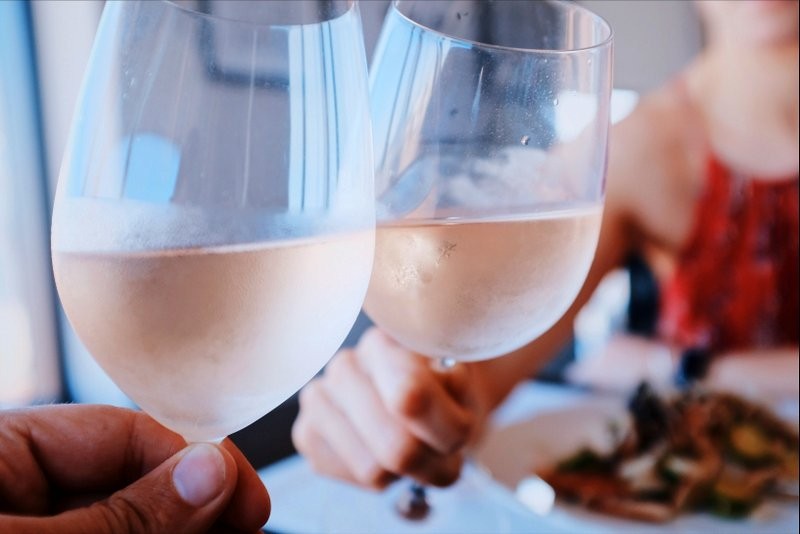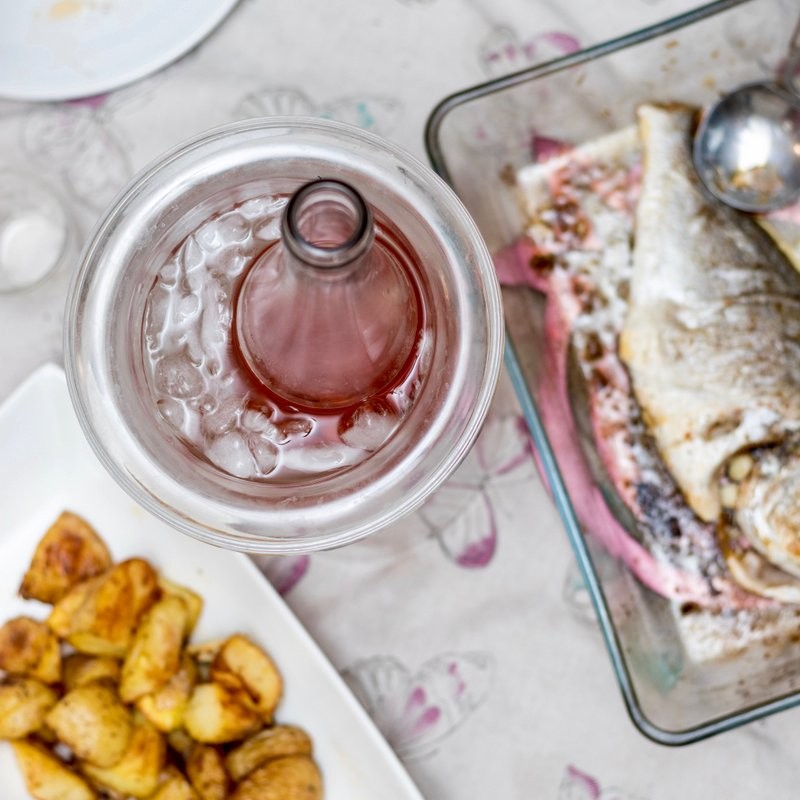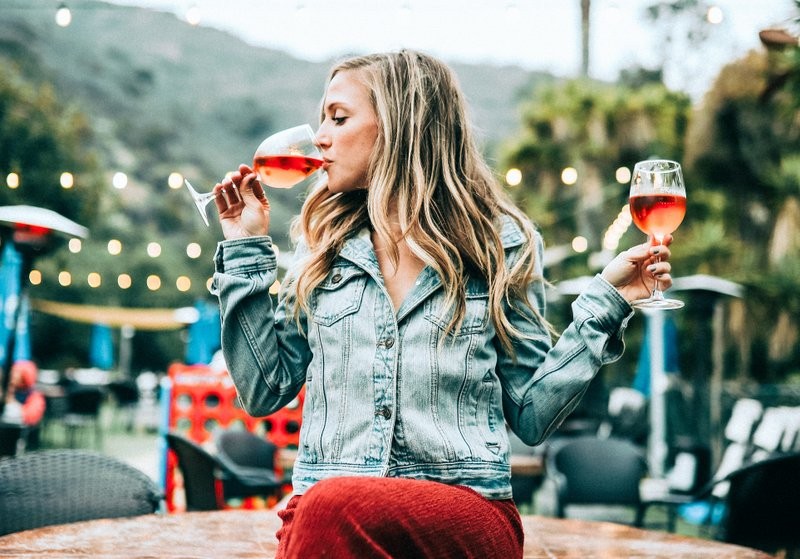Still stuck dismissing Rosé ? Use these tips to find your perfect bottle of Rosé and master Rosé wine pairing to find the best Rosé wine food match.
When the temperature soars, you’ll find me in a shady spot with a glass of Rosé in hand and I’m not alone. Rosé’s increasing popularity proves that it’s the perfect wine for a warm summer’s day.
“Australians are drinking more Rosé because our lifestyle and climate are so well suited towards it. Rosé is a simple style of wine that pairs well with a range of food, and it’s also great to enjoy on its own,” said Christine Ricketts, Cellar Director at Cellarmasters.
“When it comes to buying the perfect bottle of Rosé, there isn’t simply one type of Rosé, with a range of different styles to choose between. But by paying more attention to what the wine label reads, you can find the right Rosé for your palate,” Christine says.

Still stuck dismissing Rosé? Image Vinncenzo Landino @ Unsplash
Five tips to choose the perfect bottle of Rosé
Christine Ricketts says these are the things you should consider so you choose the perfect bottle of Rosé every time!
Go for a fresh vintage
Rosé is not a wine made for cellaring, so make sure it’s a fresh vintage. Vintage means the year the grapes used for the wine were harvested.
The rule for Rosé wine is the fresher the wine, the better. Choose the latest vintage possible – preferably a 2018 or 2019.
Grape variety matters, but winemaking more so
In Australia, most Rosé wines are made with red wine grapes. The most common varieties include Grenache, Mataro, Shiraz, Merlot, Sangiovese and Pinot Noir.
The tricky part is that Rosé is more of a factor in winemaking style rather than the grape variety itself. Generally, there are some things you can assume – for instance, Grenache grapes make fruit-forward Rosés, and Pinot Noir Rosés tend to be beautifully crisp and elegant. You need to know more about the winemaking and the region when it comes to Shiraz, Mataro and Sangiovese, to know the style.

Go for a fresh vintage of Rosé. Image Kevin Kelly @ Unsplash
Don’t judge a bottle by its colour
Do you prefer the pale coloured Rosés due to their crispness? Think again! Colour is not an indication of sweetness levels in Rosé wines. Some of the driest Rosés can be hot pink!
However, many producers are choosing to make pale Rosés to indicate that they are made in a dry style. Just to be one the safe side, check the wine tasting notes to find your perfect bottle of Rosé!
Check the region
Region matters greatly when it comes to choosing your wine. If you want a Rosé with elegance and more savoury flavours, go for a wine from a cool climate region like Adelaide Hills, Yarra Valley or Tasmania.
If you like a fruit-forward, mouth-filling Rosé, your best bottle of Rosé may be made in a warm climate region like Barossa or McLaren Vale should be your go-to.

Grape variety matters, but winemaking more so. Image Dennis Vinther @ Unsplash
How to wine food match Rosé
Although Rosé sales spike in spring and summer, more wine lovers are discovering what a great tipple it is to enjoy all year round and mastering Rosé wine pairing.
You’ll find Rosé pairs perfectly with seafood, Asian cuisine and spicy dishes, so it’s a really versatile food wine.

Don’t judge a bottle by its colour. Image Richard Loader @ Unsplash
5 Rose myths
Believe these five Rosé myths and you should start looking for pigs flying past your window.
Christine Ricketts, Cellar Director and Wine Educator at Cellarmasters debunks some of the most common Rosé myths here, so you can look like the smartest person in the room next time you are enjoying a glass or finding a Rosé wine food match!
Myth 1 – The darker the wine the bigger the flavour
Rosé gets its colour from the red grape skins which have no impact on the taste. The longer that the skins are left in contact with the juice, the more intense the colour of the final wine.
Myth 2 – Rosé is mix of white and red wine
It is very rare for Rosé to be made by mixing white and red wine. In France, this method is forbidden by law, except when it comes to Champagne.
The majority of Rosé wines are made with red wine grapes using the skin contact method. The grape skins that give red wine that beautiful colour only spends a short time with the juice when making Rosé, so the colour of the final wine is pink!
Myth 3 – Rosé is a new style of wine
Although Rosé feels very trendy, it’s actually one of the oldest styles of wine. It is believed that many of the earliest red wines actually looked more like Rosé than red wine. This is because many of the winemaking methods, including harder pressing and longer maceration times that helps red grape skins impart more colour, were not used back in the day.
Myth 4 – Rosé should be cellared
Despite the high acidity in Rosé, it is not a wine made for cellaring, so enjoy it young and fresh. The newer the vintage, the better and fresher!
Myth 5 – Aussie Rosés are sweet
Many say the best Rosé wines in the world come from France, where they tend to be bone dry with flavours like cherry, musk or spice.
Aussie Rosé is traditionally more berrylicious with strawberry and raspberry aromas. Still, due to the popularity of French Rosé, more Aussie Rosés are being made in that typical, French dry and savoury style.

Rosé pairs perfectly with seafood. Image Lavi Perchik @ Unsplash.
Find another wine match
How to drink champagne like a ninja!
Disclaimer: Ed+bK loves Rosé and has been gifted a Cellarmasters My Favourites Rosé Reservation. Follow on Instagram to see which bottles she likes best.

